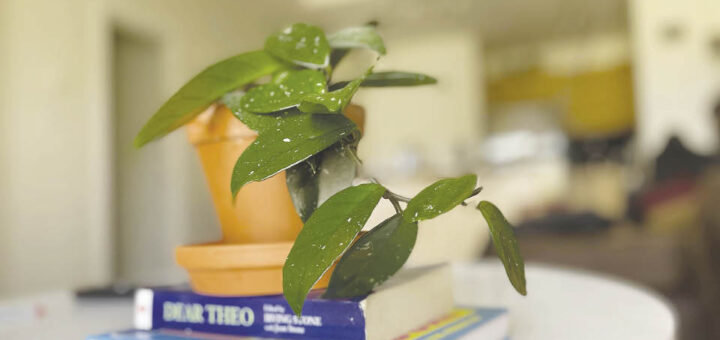Tips on how to grow a miniature jungle in your home

By Taylor Charlebois, Contributor
I love plants, there is something about them that just makes me so happy! It’s like bringing a little piece of nature into your living space or office. When you start to see a plant grow and thrive after you’ve spent time nurturing it, it’s an incredible feeling.
I grew up in a home where we had flowers and foliage everywhere. Every summer, we had a garden where we would grow vegetables and spices. I don’t think it’s a stretch to say I was put on a path of loving plants. However, I didn’t start my own plant journey until a few years ago. I was always concerned that I’d be a bad “plant dad” and let one of the little green ones under my care down by letting it die due to neglect.
Here are some of the best tips and tricks that I learned when I first started gathering plants in my home. Follow along so that you can keep your own little green friends happy and healthy.
1. Knowing your space
Before you go to the plant store, it’s important to know where in your home or workplace you want the plant to go. Knowing the direction of where your windows are is also important because different plants do better under different lighting conditions. If you know your space, you can check the tags on the plants at the store to see if it’ll be a good match for the area that you’re working with.
Generally, you don’t want to move your plants as they can get very comfortable in their environment and any changes could bother them. There are a few occasions where you might need to make adjustments. If you’re experiencing low light in the winter months, moving your plant near a window can help make them happy.
Just like us, plants can get cold too! A general rule of thumb is that if you’re cold in your space then your plant is probably pretty cold too. Try to keep the temperature range of your space at one where you and your plants are both comfortable.
2. Finding the right pot
Buying pots for plants is a whole different challenge. My general rule of thumb is to always get a pot with holes at the bottom. The water needs to be able to drain or else it can pool and cause the roots to rot, which will eventually lead to the plant dying.
3. How much to water
Overwatering and underwatering plants is probably the single most common reason why so many house plants die. Every plant needs specific watering requirements, but here are a few important rules of “green” thumb that are helpful.
Firstly, you want the soil to get pretty dry between waterings. I use my finger to see what the soil situation is like on a weekly basis, but I also recommend using a moisture meter. These helpful little devices indicate how much moisture your plant has. When watering, I like to just water until the top level of the dirt is wet.
4. How to use fertilizer
All plants like good soil, light and a comfortable environment to thrive, but one thing that is often overlooked is fertilizer, which is the plant’s food. Every plant is unique; in the spring and summer, plants like to be fed every three to four weeks. In the winter, most house plants go into a dormant state where they don’t need any fertilizer at all.
5. What to do with dead leaves
Insects love decaying and dying foliage, so be sure to remove any rotting or dead leaves that are sitting on top of the soil. Whenever I see leaves that are turning yellow or are visibly about to die, I gently prune the plant by cutting off the dead leaves — this ensures they don’t steal essential nutrients from the other healthy leaves.
Whenever you are dealing with plants, don’t be discouraged when you try something new and it doesn’t work. Some plants just die, and that’s okay! But you’re going to get better and better at it as long as you keep up with it.
Remember, you can always try to find a plant that suits your comfort zone. If you’re just starting out, I would recommend buying a succulent or pathos — both are very easy beginner plants that don’t need a lot of attention and can easily thrive.




